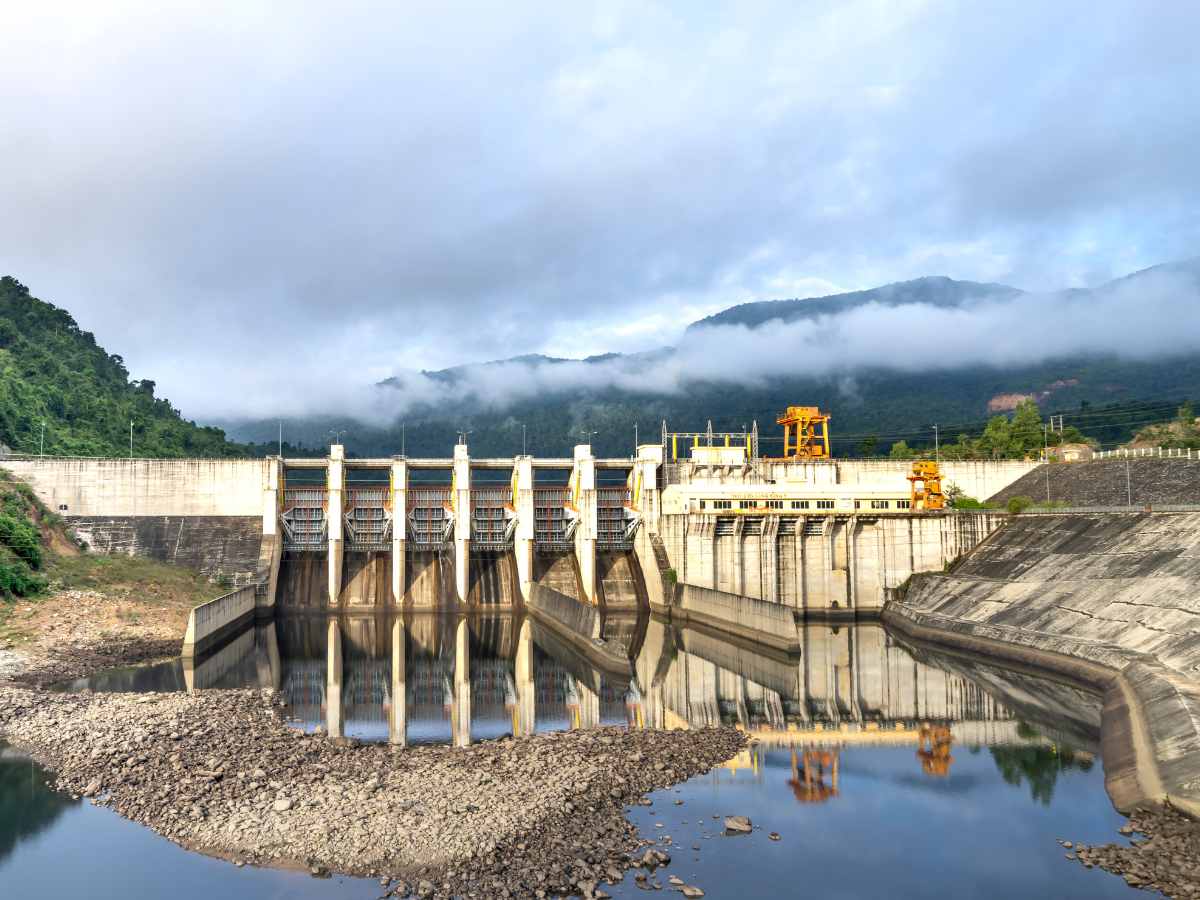Hydroelectric power projects, aggregate capacity of 15 GW under construction
Currently, PSPs with aggregate capacity of 2.7 GW are under construction in the county and another 50 GW is under various stages of development.

Representational image
Hydro capacity to increase from 42 GW today to 67 GW by 2031-32, marking an increase of more than 50 percent. Good monsoon in FY 2024-25 as per IMD prediction to contribute to improvement in water reservoir levels.
Since the Indian Meteorological Department has predicted higher rainfall in the current financial year, therefore hydropower projects located in the Himalayan region get base flow from contribution of snowmelt, i.e., from surface runoff produced by melting snow; so, any rise in temperature will increase snowmelt contribution.
Moreover, given the ongoing energy transitions in the country, the development of Pumped Storage Projects (PSPs) assumes importance for providing greater inertia and balancing power to the grid.
Currently, PSPs with aggregate capacity of 2.7 GW are under construction in the county and another 50 GW is under various stages of development. It is projected that PSP capacity shall increase from 4.7 GW to around 55 GW by 2031-32.
The fall in hydro power generation in 2023-24 as compared to 2022-23 cannot be attributed solely to less rainfall.
Hydrology of any river basin is variable and follows some period of alternate wet and dry spells. Lower rainfall in the past does not mean that the same type of rainfall will necessarily occur in the future as well.
Contribution of Hydro to Power System-
It is important to recognize that the country is in the midst of an energy transition, marked by significant additions of solar and wind power to the current energy mix. Further, power from solar energy is available during the time of the day that does not coincide with the peak power demand.
Hydroelectric power has always played a significant role in the energy landscape of the country, providing essential peaking support to the electricity grid, thus enhancing the reliability and resilience of the power system.
Share of Hydro in Total Energy Mix and Pace of Addition of Hydro Capacity-
The development of hydropower projects has been marred by various issues such as natural calamities, geological surprises and contractual disputes, which have resulted in slower hydro capacity addition in recent years.
Nevertheless, aligning with the ambitious targets set forth by India in the Nationally Determined Contributions (NDC) under the COP Paris agreement, which are aimed at reducing emissions intensity of GDP by 45% from 2005 levels by the year 2030 and achieving 50% of installed electric power capacity from non-fossil-fuel sources by the year 2030, the government has adopted a proactive stance towards hydro power development, striving for accelerated progress.
Join PSU Connect on WhatsApp now for quick updates! Whatsapp Channel
Read Also : Bharat Heavy Electricals Limited Awards Major EPC Contract to Power Mech ProjectsGrowth in India’s Renewable Energy Capacity
India’s renewable energy capacity has increased significantly in recent years. As on 30.11.2021, the installed Renewable Energy (RE) capacity of the country stood at 150.54 GW (solar: 48.55 GW, wind: 40.03 GW, Small hydro: 4.83 GW, Bio-power: 10.62 GW, Large Hydro: 46.51 GW) while its nuclear energy based installed capacity stood at 6.78 GW. This brings the total non-fossil-based installed energy capacity to 157.32 GW, which is 40.1% of the total installed electricity capacity of 392.01 GW at the time.
Thus, India has overachieved its commitment made at COP 21 Paris Summit by achieving more than 40% of its installed power capacity from non-fossil fuels, almost nine years ahead of its commitment.
India is the only G20 country that has fulfilled all commitments it made in Paris on climate change.
Read Also : ITI Limited Director (Marketing) Ramana Babu C V Given Additional Charge as Director (Finance)Subsequent to this, India upgraded its commitments under Nationally Determined Contributions (NDCs) in Glasgow COP26 and in August 2022 communicated its updated NDCs to UNFCCC, which includes:
To reduce Emissions Intensity of its GDP by 45 percent by 2030, from 2005 level.
To achieve about 50 percent cumulative electric power installed capacity from non-fossil-fuel-based energy resources by 2030, with the help of transfer of technology and low-cost international finance including from Green Climate Fund (GCF).
At the same time, India is targeting to achieve renewable energy capacity more than the committed capacity of 50% from non-fossil sources, by the year 2030. In order to meet 500 GW non-fossil fuel generation capacity, a transmission plan has already been prepared and bids for renewable energy capacity have been finalised.
All-India Renewable Energy Generation (excluding Large Hydro) has increased steadily from 61.7 billion units in 2014-15 to 225.5 billion units in 2023-24 at a Compound Annual Growth Rate (CAGR) of 15.47%.
Read Also : Hyundai Motor India Appoints Mr. Tarun Garg as next Managing Director & CEO